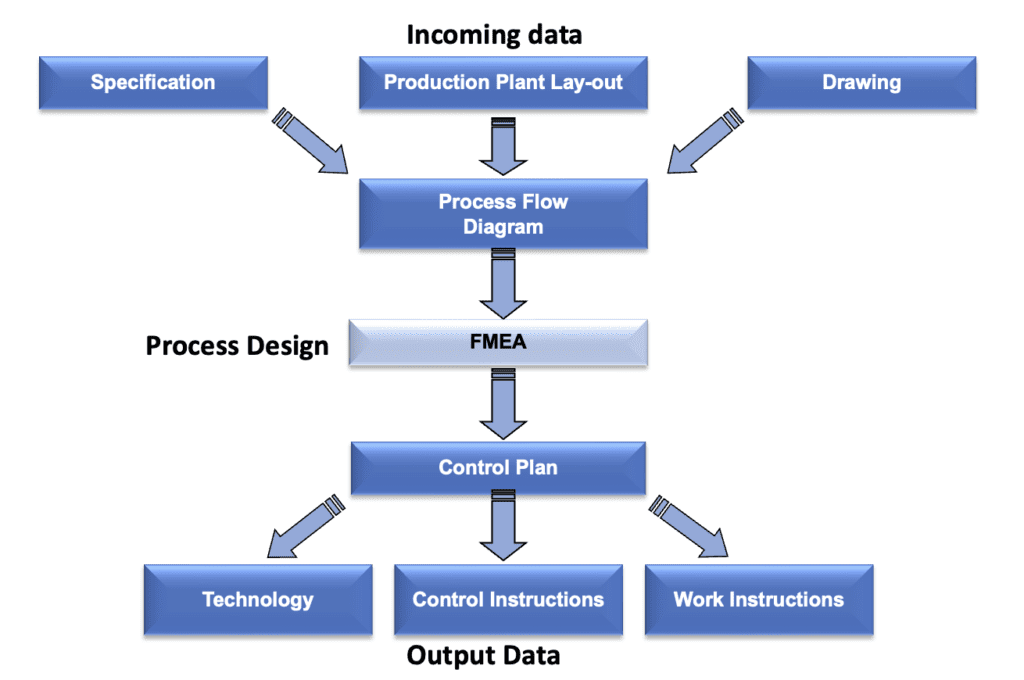FMEA (Failure Method and Effects Analysis) is an analytical technique combining technology and implementation team experience. It is used to predict the identification of failure modes for a product or process.
In the case of a significant impact on the operator or final user, actions are planned to eliminate potential defects.
Of course, the above activities must be properly documented. Failure cause and effect analysis (FMEA) is a rigorous process designed to identify all possible potential defects in a design or manufacturing process. This is also element of Advance Product Quality Planning – APQP.

FMEA also forces the interdisciplinary team to think systematically about a product or process. This is done by asking and answering the following questions:
– What could go wrong (defect) in a design or process?
– How much can it get worse (risk) if something goes wrong (fails)?
– What can be done (corrective action) to prevent the effects of the fault from occurring?
When should be applied?
We don’t create FMEA just once, because it is one of those activities that requires periodic review. It includes:
- Preventive action before the product goes into series production
- During new project implementation
- For a new processes or technology
- When making changes to an existing project or process
- To use a current design or process in a new location
- As part of the preventive actions in section D7 of the 8D report – usually associated with a Control Plan
Who should be involved in FMEA development?
Just like for quality problems solving, creating an FMEA is team work. Team sizes may vary depending on the context and the launch phase. The most frequently recommended amount is about 5-7 people. Depending on the type of FMEA performed, they may come from the following departments:
- Research and Development (R&D)
- Production
- Testing and Validation
- Human Resources
- Maintenance
- Logistics
- Quality
- Marketing and Sales
Benefits of using
The primary benefit of using FMEA is to support an objective evaluation of a project or process. Additionally, we increase the chance of identifying potential defects in both areas.
This document is also great for prioritizing actions to improve the project or process, taking into account the impact on the client. Thanks to DFMEA, we are able to identify potential special characteristics and systematize the knowledge used during new launches.
You can download editable Excel form for free on the Free Quality Tools
Document name: PFMEA template – Excel form
Dariusz Kowalczyk


